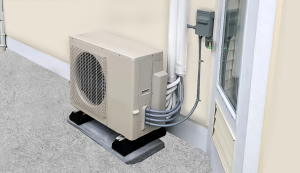How has the 2023 NEC changed LFNC conduit use in corrosive environments?
Overview

Liquid Tight Flexible Nonmetallic Conduits (LFNC) are used to provide flexible and durable electrical pathways to conductors and cables in various environments. The 2023 edition of the NEC introduced a modification to Section 356.10, permitting the use of LFNC specifically in corrosive environments. This modification aims to expand the range of applications for LFNC conduits.
Applying the 2023 Code
Liquid Tight Flexible Nonmetallic Conduits (LFNC) are a type of conduit systems specifically designed to provide flexible and robust paths for electrical wires and cables in various applications. LFNC conduits are constructed from nonmetallic materials such as PVC (Polyvinyl Chloride) or thermoplastic, that offer flexibility, electrical insulation, and durability. The flexibility of LFNC allows it to bend and twist easily, facilitating installation around corners, obstacles, and through tight spaces. Additionally, LFNC conduits are designed to withstand a range of environmental factors like moisture and heat, making them suitable for both indoor and outdoor installations.
In previous editions of the NEC, Section 356.10 outlined guidelines for the permissible uses and installation requirements of LFNC, ensuring electrical safety. However, these versions did not permit LFNC conduits to be used in installations where they might be exposed to corrosive elements. This limitation hindered the practical application of LFNC conduits, particularly in industries such as chemicals and pharmaceuticals, where such elements are common. To address this issue, Section 356.10 was amended in NEC 2023 to allow and clearly define the conditions for the use of LFNC conduits in corrosive environments. This update aims to expand the potential applications of LFNC conduits, enabling their use in a wider range of areas and industries.
What’s New for the 2023 NEC?
The table below presents a comparison between the 2020 NEC and the 2023 NEC regarding Section 356.10.
2020 NEC |
2023 NEC |
| 356.10 Uses Permitted
LFNC shall be permitted to be used in exposed or concealed locations for the following purposes: (1) Where flexibility is required for installation, operation, or maintenance. (2) Where protection of the contained conductors is required from vapors, machine oils, liquids, or solids. (3) For outdoor locations where listed and marked as suitable for the purpose. (4) For direct burial where listed and marked for the purpose. (5) Type LFNC shall be permitted to be installed in lengths longer than 1.8 m (6 ft) where secured in accordance with 356.30. (6) Type LFNC-B as a listed manufactured prewired assembly, metric designator 16 through 27 (trade size 1/2 through 1) conduit. (7) For encasement in concrete, where listed for direct burial and installed in compliance with 356.42. (8) Conductors or cables rated at a temperature rating of LFNC conduit shall be permitted to be installed in LFNC, provided the conductors or cables are not operated at a temperature higher than the listed temperature rating of the LFNC. Informational Note: Extreme cold can cause some types of nonmetallic conduits to become brittle and therefore more susceptible to damage from physical contact. |
356.10 Uses Permitted
LFNC shall be permitted to be used in exposed or concealed locations for the following purposes: (1) Where flexibility is required for installation, operation, or maintenance. (2) Where protection of the contained conductors is required from vapors, machine oils, liquids, or solids. (3) For outdoor locations where listed and marked as suitable for the purpose. (4) For direct burial where listed and marked for the purpose. (5) Installed in lengths longer than 1.8 m (6 ft) where secured in accordance with 356.30. (6) LFNC-B as a listed manufactured prewired assembly, metric designator 16 through 27 (trade size 1/2 through 1) conduit. (7) For encasement in concrete, where listed for direct burial and installed in compliance with 356.42. (8) In locations subject to severe corrosive influences as covered in 300.6 and where subject to chemicals for which the materials are specifically approved. (9) Conductors or cables rated at a temperature higher than the listed temperature rating of LFNC shall be permitted to be installed in LFNC, provided the conductors or cables are not operated at a temperature higher than the listed temperature rating of the LFNC. Informational Note: Extreme cold can cause some types of nonmetallic conduits to become brittle and therefore more susceptible to damage from physical contact. |
